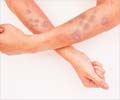More frequent blood testing to determine HCV levels can predict when the patient can safely stop the antiviral medication used for Hepatitis C.

‘More frequent blood testing to determine HCV levels can predict when the patient can safely stop the antiviral medication used for Hepatitis C.’





"Recent clinical trials of DAAs against HCV suggest that cure of the infection often took place before the end of treatment," said Harel Dahari, PhD, assistant professor at Loyola University Chicago Stritch School of Medicine. "Treatment currently is standardized to be given for a set period of time, not tailored to the patient," said Scott Cotler, MD, FCO, hepatology division director for Loyola and Stritch professor. "In many cases, this may result in the prolonged use of expensive drugs with essentially no additional positive effect."
Using more frequent blood testing to determine HCV levels, Loyola researchers were able to identify when a cure was reached and predict when therapy could be discontinued. This modeling could allow for individualized treatment to achieve optimal results while reducing drug duration and cost.
The lead authors, Drs. Dahari, Laetitia Canini, PhD, Susan L. Uprichard, PhD, and colleagues examined the test results of 58 chronic-HCV patients being treated with the widely used DAA drug sofosbuvir, combined with daclatasvir, simeprevir or ledipasvir, in three French referral centers.
HCV was measured before treatment (called baseline), at day two, every other week, end of treatment and then 12 weeks after end of treatment. Mathematical modeling was used to predict the duration of treatment need to achieve a cure.
Advertisement
Advertisement















